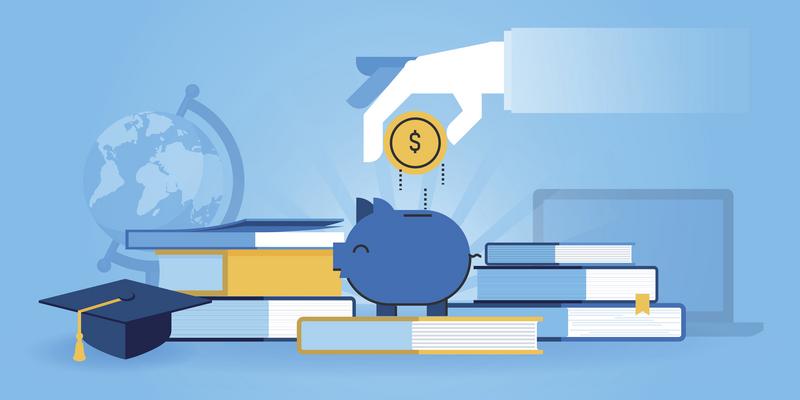Student loans are funds borrowed to cover education costs, which must be repaid with interest. Understanding loan types, interest rates, and repayment options is crucial for every borrower.
Navigating the world of student loans can be overwhelming for many borrowers. With rising tuition costs, financing education through loans has become increasingly common. Knowledge about different loan types, such as federal and private loans, is essential. Federal loans often offer lower interest rates and more flexible repayment options compared to private loans.
It’s important to consider factors such as fees, interest rates, and the impact of compound interest. By understanding these aspects, borrowers can make informed decisions that will ease their financial burden post-graduation. Empowering yourself with this knowledge is the first step toward financial responsibility.
The Basics Of Student Loans
Understanding student loans is essential for every borrower. Knowledge helps manage debt wisely. Different types of loans exist, each with unique features. Knowing the basics ensures informed decisions.
Types Of Student Loans
Student loans come in several types. Here are the main categories:
- Federal Loans
- Private Loans
Each type has distinct characteristics. Here are the details:
| Loan Type | Features |
|---|---|
| Federal Loans |
|
| Private Loans |
|
Federal Vs. Private Loans
Choosing between federal and private loans is crucial. Each has advantages and disadvantages.
Federal Loans are often the best choice for most students. They offer:
- Fixed interest rates
- No credit check for eligibility
- Income-driven repayment plans
Private Loans may be suitable for specific situations. They can provide:
- Higher loan amounts
- Faster funding
Consider your needs and financial situation. Evaluate both options carefully before borrowing.

Before You Borrow
Understanding student loans is crucial. Before committing to borrowing, evaluate your needs and future earnings. This helps in making informed choices. Here are key areas to consider.
Evaluating Financial Needs
Assessing your financial situation is essential. Determine how much money you actually need. Consider the following:
- Tuition fees
- Books and supplies
- Living expenses
- Transportation costs
Use a simple budget to track your costs. Here’s a basic table to guide you:
| Expense Type | Estimated Cost |
|---|---|
| Tuition | $X,XXX |
| Books | $XXX |
| Living Expenses | $X,XXX |
| Transportation | $XXX |
Summing these costs gives you a clear picture. Borrow only what is necessary. Avoid overborrowing as it leads to higher debt.
Estimating Future Earnings
Research potential earnings in your chosen field. Knowing future income helps in planning loan repayment. Consider these steps:
- Look at average starting salaries.
- Assess job growth in your field.
- Evaluate the demand for your skills.
Use online resources like salary calculators. This information helps you understand your financial future. Make sure your potential earnings can cover your loan payments.
Loan Terms And Conditions
Understanding the loan terms and conditions is crucial for every borrower. These terms define how your loan operates. They include key aspects like interest rates, repayment periods, and other important details. Knowing these elements helps you make informed financial decisions.
Interest Rates Explained
Interest rates determine the cost of borrowing money. They can be fixed or variable. A fixed rate remains the same throughout the loan term. A variable rate can change based on market conditions.
| Type of Interest Rate | Description |
|---|---|
| Fixed Rate | Stays the same throughout the loan. |
| Variable Rate | Can change based on market trends. |
Generally, lower interest rates mean lower total payments. Borrowers should compare rates from different lenders. This helps in finding the best deal.
Repayment Periods
The repayment period is the time you have to pay back the loan. This period can vary widely. It typically ranges from 10 to 30 years. Longer periods often mean smaller monthly payments.
- Short-term repayment: 10 years or less.
- Medium-term repayment: 10 to 20 years.
- Long-term repayment: 20 to 30 years.
Choosing the right repayment period affects your financial future. Shorter terms save money on interest. However, monthly payments are higher. Longer terms reduce monthly costs but increase total interest paid.
- Consider your budget.
- Evaluate your career prospects.
- Look at the total cost of the loan.

Credit: www.snhu.edu
Understanding Interest
Interest plays a significant role in student loans. It determines how much money you will owe over time. Understanding interest helps borrowers make informed decisions. It can also save you money in the long run.
How Interest Affects Loan Balance
Interest is the cost of borrowing money. It is added to your loan balance. Here’s how it works:
- Principal Amount: This is the original amount borrowed.
- Interest Rate: This is the percentage charged on the principal.
- Loan Term: This is the time frame for repayment.
Each month, interest accrues on the principal. As interest adds up, your total loan balance increases. Over time, this can make repayment more challenging.
| Year | Principal | Interest Accrued | Total Balance |
|---|---|---|---|
| 1 | $10,000 | $1,000 | $11,000 |
| 2 | $10,000 | $1,100 | $12,100 |
| 3 | $10,000 | $1,210 | $13,310 |
This table shows how interest can grow your loan balance.
Strategies To Minimize Interest
Reducing interest can save you a lot of money. Here are some effective strategies:
- Pay Early: Make payments before the due date.
- Make Extra Payments: Pay more than the minimum amount.
- Choose a Lower Interest Rate: Research different loan options.
- Consider Refinancing: Combine loans for better rates.
Implementing these strategies can significantly lower your total repayment cost. Stay informed and proactive to manage your student loans wisely.
Loan Management
Loan management is vital for every student borrower. Understanding how to manage your loans helps avoid stress. It ensures you stay on top of payments and maintain a good credit score.
Keeping Track Of Borrowing
Tracking your student loans is essential. It helps you know how much you owe. Here are some tips:
- Maintain Records: Keep copies of all loan documents.
- Use a Spreadsheet: Create a simple spreadsheet to track loan details.
- Set Reminders: Use calendars or apps to remind you of payment dates.
Communicating With Loan Servicers
Staying in touch with your loan servicer is crucial. They can help you understand your loan better. Follow these steps for effective communication:
- Know Your Servicer: Find out who manages your loans.
- Ask Questions: Don’t hesitate to ask about loan terms or repayment options.
- Update Information: Inform them of any changes in your contact details.
Good communication can make managing your loans easier. It can lead to more options, like deferment or income-driven repayment plans.
:max_bytes(150000):strip_icc()/dti-0c7453b83dae4648a4cf19c5a66fad20.jpg)
Credit: www.investopedia.com
Repayment Plans
Understanding student loan repayment plans is crucial for every borrower. These plans dictate how and when you will repay your loans. Choosing the right plan can ease financial stress and help you manage your budget better. Here, we explore the various options available and the potential for loan forgiveness.
Options For Repayment
Borrowers have several repayment options to consider. Each plan has unique features and benefits. Here’s a quick overview:
| Repayment Plan | Duration | Monthly Payments |
|---|---|---|
| Standard Repayment Plan | 10 years | Fixed payments |
| Graduated Repayment Plan | 10 years | Starts low, increases over time |
| Extended Repayment Plan | Up to 25 years | Fixed or graduated payments |
| Income-Driven Repayment Plans | 20-25 years | Based on income |
Each option has pros and cons. Consider your financial situation before making a choice. Fixed payments offer predictability. Income-driven plans provide flexibility based on your earnings.
Loan Forgiveness Programs
Loan forgiveness programs can significantly reduce your repayment burden. These programs cancel part or all of your student loans after specific requirements are met.
- Public Service Loan Forgiveness (PSLF): Available for those working in public service jobs.
- Teacher Loan Forgiveness: For teachers who work in low-income schools.
- Income-Driven Repayment Forgiveness: After 20-25 years of payments under an income-driven plan.
Eligibility criteria vary by program. Always check the requirements before applying. Keeping accurate records of your employment and payments is essential.
Understanding these options can empower you as a borrower. Make informed decisions to set yourself up for financial success.
Borrower Protections
Understanding borrower protections is essential for every student loan borrower. These protections can provide relief during financial hardships. They help ensure you can manage your loan effectively. Knowing your rights can make a big difference in your repayment journey.
Grace Periods
A grace period is a time frame after graduation or leaving school. During this period, you do not need to make loan payments. Here’s what you need to know:
- Typically lasts for six months.
- Available for federal student loans.
- Interest may still accrue on unsubsidized loans.
Grace periods give you time to find a job. You can prepare your finances before repayments start. Always check the specific terms for your loan type.
Deferment And Forbearance
Deferment and forbearance offer temporary relief from payments. They can help in tough financial situations. Here’s a breakdown:
| Feature | Deferment | Forbearance |
|---|---|---|
| Interest Accrual | Subsidized loans may not accrue interest. | Interest accrues on all loans. |
| Eligibility | Financial hardship, unemployment, or school enrollment. | Temporary financial difficulties. |
| Duration | Up to 3 years depending on the situation. | Usually up to 12 months. |
These options are not permanent solutions. They provide short-term relief. Reach out to your loan servicer for guidance. Understanding your options can relieve stress during challenging times.
Smart Borrowing Tips
Understanding student loans is crucial for every borrower. Making informed choices can save money and stress. Here are some smart borrowing tips to guide you.
Choosing The Right Loan
Different loans have unique features. Knowing these can help you select the best option:
- Federal Loans: Typically have lower interest rates.
- Subsidized Loans: Interest is paid by the government while in school.
- Unsubsidized Loans: Interest accrues from the moment you borrow.
- Private Loans: Often require a credit check and may have higher rates.
Consider these factors before making your choice:
| Loan Type | Interest Rate | Repayment Options |
|---|---|---|
| Federal Subsidized | Low | Flexible |
| Federal Unsubsidized | Moderate | Flexible |
| Private | Varies | Limited |
Avoiding Common Pitfalls
Many borrowers make mistakes that can lead to trouble. Here are some common pitfalls to avoid:
- Not Reading Terms: Always read the loan terms carefully.
- Ignoring Interest Rates: Higher rates mean higher total costs.
- Borrowing More Than Needed: Only take what you require for school.
- Missing Payments: Late payments can harm your credit score.
Stay informed and ask questions. Understanding loans can help you manage them wisely.
Frequently Asked Questions
How Do I Understand My Student Loans?
To understand your student loans, review your loan documents carefully. Identify the loan types, interest rates, and repayment terms. Monitor your borrowing amount and keep track of payment deadlines. Stay in touch with your loan servicer for updates and assistance.
This knowledge will help you manage your loans effectively.
What Are Key Things You Should Consider Before Taking Out Federal Student Loans?
Before taking out federal student loans, consider your borrowing amount, potential starting salary, and loan terms. Understand repayment options and keep all loan documents. Make timely payments and maintain communication with your loan servicer to manage your debt effectively.
What Should You Look For In A Student Loan?
Consider interest rates, repayment options, and borrower protections. Look for flexible terms and any associated fees. Research the lender’s customer service reputation. Ensure you understand the loan’s terms fully before borrowing. These factors significantly impact your repayment experience.
What Are The 3 Types Of Student Loans And Who Provides Them?
The three types of student loans are federal loans, private loans, and state loans. Federal loans are provided by the government. Private loans come from banks or credit unions. State loans are offered by individual states to residents. Each type has different terms and eligibility requirements.
Conclusion
Understanding student loans is crucial for every borrower. This knowledge empowers you to make informed financial decisions. By grasping terms, interest rates, and repayment options, you can avoid pitfalls. Remember, timely payments can save you money in the long run.
Stay informed and manage your loans wisely for a brighter financial future.
